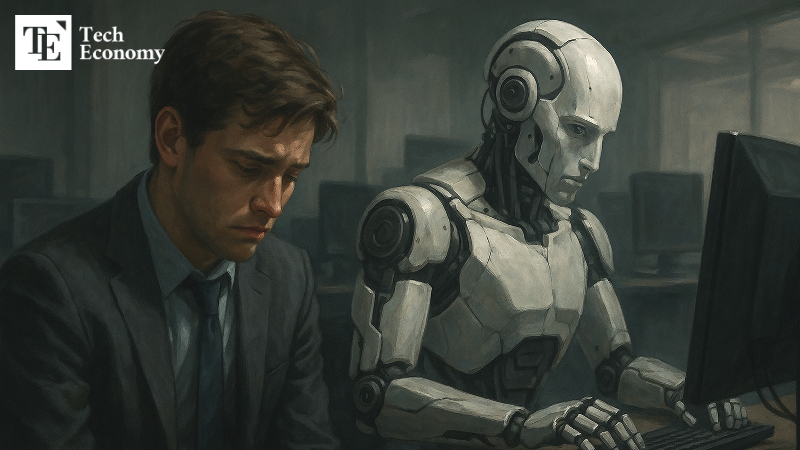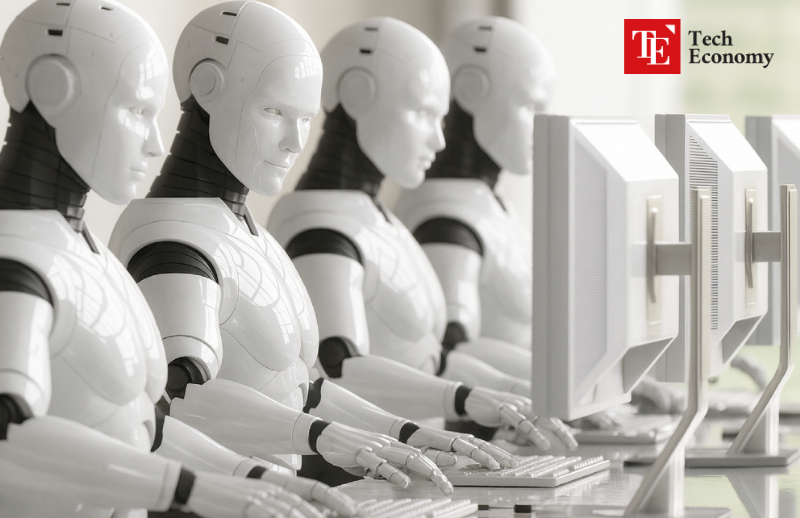From Job Losses to New Roles: AI Triggers Structural Workforce Shift
Input
Modified
“AI Took My Job”: Youth employment plunges in certain sectors. Repetitive and easily automated roles are being replaced the fastest. Yet new jobs are emerging, signaling a major AI-driven industrial shift.

Generative AI is increasingly seen as limiting job opportunities for young workers in the United States. Analysts note that as AI rapidly takes over simple, repetitive tasks and boosts the productivity of skilled professionals, entry-level positions are disappearing. Others, however, argue that this shift is simply part of a broader market realignment driven by AI.
AI Drives Decline in Youth Employment
According to The Wall Street Journal on the 26th (local time), a new study by Stanford University researchers found that since the release of OpenAI’s ChatGPT in late 2022, employment among 22–25-year-olds has sharply declined in sectors highly susceptible to automation, such as software development, translation, and customer service. In software development specifically, youth employment peaked at the end of 2022 but fell about 20% by July this year. By contrast, employment among 26–30-year-olds has remained flat, while older workers have even seen gains.
The researchers stressed that this trend cannot be explained by macroeconomic factors such as Federal Reserve rate hikes or slowing growth, but instead shows AI’s direct impact on the labor market. Experienced developers continue to hold demand due to skills like teamwork and project management—difficult to automate—while younger workers risk a “generational gap” as AI displaces them at the entry stage, cutting off opportunities to learn. Lead researcher Erik Brynjolfsson emphasized the need for explicit training systems so young workers can build necessary skills rather than relying solely on on-the-job experience.
Similar warnings have been raised elsewhere. Joseph Briggs, head of global economic research at Goldman Sachs, noted on the firm’s podcast this month that unemployment among younger tech workers aged 20–30 has risen about three percentage points since early this year—far higher than in other fields for the same age group. While the broader youth labor market impact remains limited, he cautioned that sectors aggressively adopting AI to boost efficiency are already showing negative employment signals. If job displacement accelerates within the next one to three years, Briggs estimated, a 7% substitution rate could lift unemployment by 2–2.5 percentage points, delivering a significant macroeconomic shock.
Why AI Adoption Leads to Job Losses
The sharp decline in youth employment is largely due to AI’s rapid takeover of information- and data-driven tasks that are repetitive and rule-based. With AI now handling document drafting, data organization, and translation, demand for entry-level office workers and support staff has dropped. Law firms, accounting firms, and news outlets, in particular, have cut junior positions while actively deploying AI to boost the productivity of existing staff.
As AI enhances the output of experienced professionals, the role of junior employees becomes increasingly marginal. Oxford Economics noted in a recent report that “AI is raising the productivity of higher-level workers while rendering lower-level roles unnecessary,” warning that AI-driven labor shocks are not confined to specific industries but are disrupting hierarchical organizational structures more broadly.
Some analysts caution, however, that the impact is not strictly tied to age. As AI reshapes work systems, employees who fail to demonstrate clear competencies risk displacement, even at the management level. Microsoft, for example, recently announced layoffs affecting about 9,000 mid-career managers in their 40s and 50s—roughly 4% of its workforce—as it doubles down on AI investments. The move reflects a broader trend: roles that can be replaced by AI are being eliminated regardless of age.

Job Losses as Part of Market Restructuring?
Some analysts argue that the current wave of displacement should be viewed not as AI indiscriminately taking jobs, but as part of a broader restructuring of the labor market. With AI handling repetitive tasks, greater emphasis is now placed on roles that require uniquely human capabilities—social judgment, complex problem-solving, client persuasion, and strategic planning. A clearer division of labor is emerging: AI performs routine functions, while humans focus on higher-order intellectual and emotional work.
At the same time, entirely new jobs are being created around AI. Companies are forming dedicated task forces to design AI strategies and manage tools, while demand is rising for data verification specialists who can review AI-generated content. Other emerging roles include AI integration and deployment experts, regulatory compliance officers, model trainers optimizing system performance, data governance professionals managing large datasets, and security and privacy specialists for AI systems.
Experts stress the need for long-term adaptation. A 2023 report by the McKinsey Global Institute argued that the spread of AI should be seen as structural labor market reorganization rather than a simple question of job losses or gains. Governments and businesses, it urged, must expand training and reskilling programs while establishing systems to facilitate job transitions. While some near-term job losses are unavoidable, the report concluded, over the long run new roles and industries could drive a positive cycle of employment growth.






















Comment